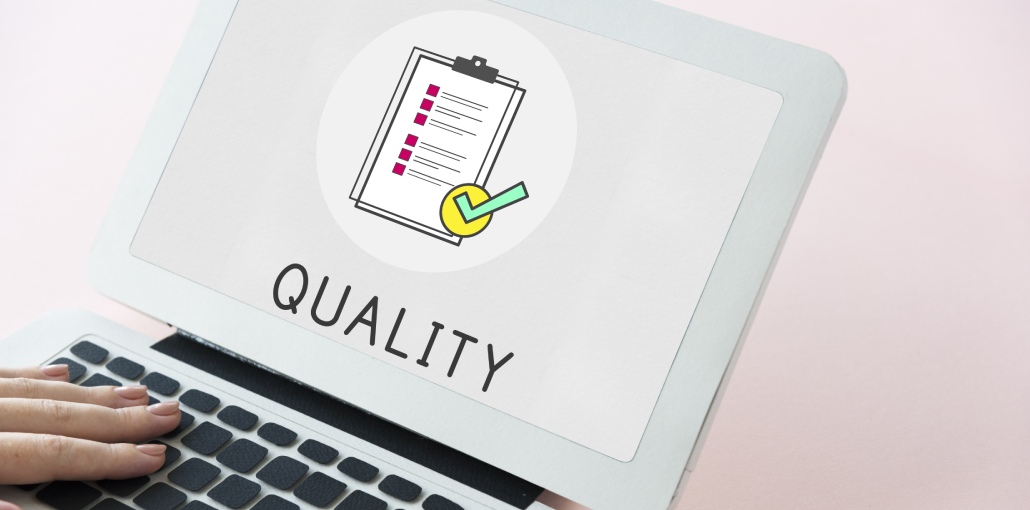Quality control can make or break a business depending on the industry. In manufacturing, for example, quality control can insure against internal failures in manufacturing that can lead to recalls and product redesign. The American Society for Quality says the cost of poor quality totals up to 15 percent of an organization’s revenue – greatly impacting a business’s ability to stay productive and financially sound. This is where project quality management can govern production processes in a business to guarantee the success of any initiative.
Quality control management is the process by which quality and consistency are ensured, managed, and maintained throughout a project. Quality itself can differ based on the type of project, type of business, industry standards, compliance requirements, and other components. The goal of project quality management is to make sure that the given project meets the needs it was set out to.
Also read: 5 Ways A Learning Management System For Businesses Can Help
What is the Purpose of Quality Control Management?
The purpose of project quality management is to ensure that project deliverables meet the requirements of the overall goal and standards of the project, as well as the needs of the stakeholders.
Project managers can define “quality” in a few ways. By setting a standard for “verification,” for example, quality would include compliance with requirements. If quality must include “validation,” then the deliverable must meet certain agreed-upon needs. Other standards can include precision, accuracy, and tolerance.
What is the Role of Quality Control Management?
Project quality management specifies the standards that must be met by a particular deliverable as well as the actions required to achieve those standards. It functions as the governing component of any project – ensuring the maximum quality of deliverables while minimizing the cost of poor quality wherever possible.
What Are the Components of Quality Management?
Planning
A solid quality management system will begin with a planning phase that involves identifying the standards and requirements of quality for the deliverable and overall project. In this phase, project managers will determine which standards – such as verification, accuracy, and others mentioned above – will be the ones to measure against the deliverable.
The project managers will also take into consideration several other types of standards, including:
- Regulatory requirements that set their own standard for a deliverable to pass compliance-based scrutiny.
- Industry-standard specifications such as The American Society for Testing and Materials (ASTM) for
- construction of Institute of Electrical and Electronics Engineers (IEEE) for electrical work.
Country-specific requirements. - Internal company standards such as any minimum standard of quality.
- Legal standards.
The planning phase should document how the company will institute the quality policy, the resources needed to guarantee the quality, how quality will be assured, and any other requirements to enact the plan.
The project managers will then share the goal of the project and all quality standards with stakeholders. Then they will delegate the responsibilities for carrying out quality management to the appropriate people.
Assurance
Quality assurance is the stage in which project managers audit the quality requirements to ensure the right definitions and standards are being applied to the deliverables. Assurance determines how quality will be measured, who will do the measuring, what units, types, or processes will be measured, and how often they will be measured.
Assurance also determines what standards will be used to reject a deliverable that fails to meet certain criteria.
The assurance phase targets certain sections of the production system to see if processes can be improved. Project managers will then make recommendations to fix such areas for improvement.
Control
Quality assurance is different from quality control in that assurance measures the process of production itself while control measures the product output. Assurance looks at activity and performance, while control measures the number of deliverables produced or how deliverables meet certain specifications drawn up in the planning stage.
In manufacturing, assurance is focused on preventing defects, for example, while control is focused on identifying defects. Quality control is the last phase of project quality management. It identifies the causes of poor quality and determines what deliverables meet the standards outlined in the plan created in the first phase.
Also read: Best 5 Project Management Software in 2021
In the control phase, project managers can see what went wrong, how often, and how severe the mistakes were. While some defects may be acceptable, others may not, depending on how grievous the defect and other standards the quality management plan created. Quality control also involves an inspection phase to determine what deliverables meet the pass/fail criteria. These results are recorded to assess performance and make changes to ensure better quality next time.
The Bottom Line
The quality management process can employ certain technologies to aid in analyzing production and performance. Document management software helps store critical business documents and automate company-wide workflows to keep information accessible and secure at every step of the quality management process. Specification management is another tool project managers can use to digitize their specifications in a centralized system to share and manage specs and data easily.
The right quality management system and technologies have the power to level up manufacturing operations.










Leave a comment